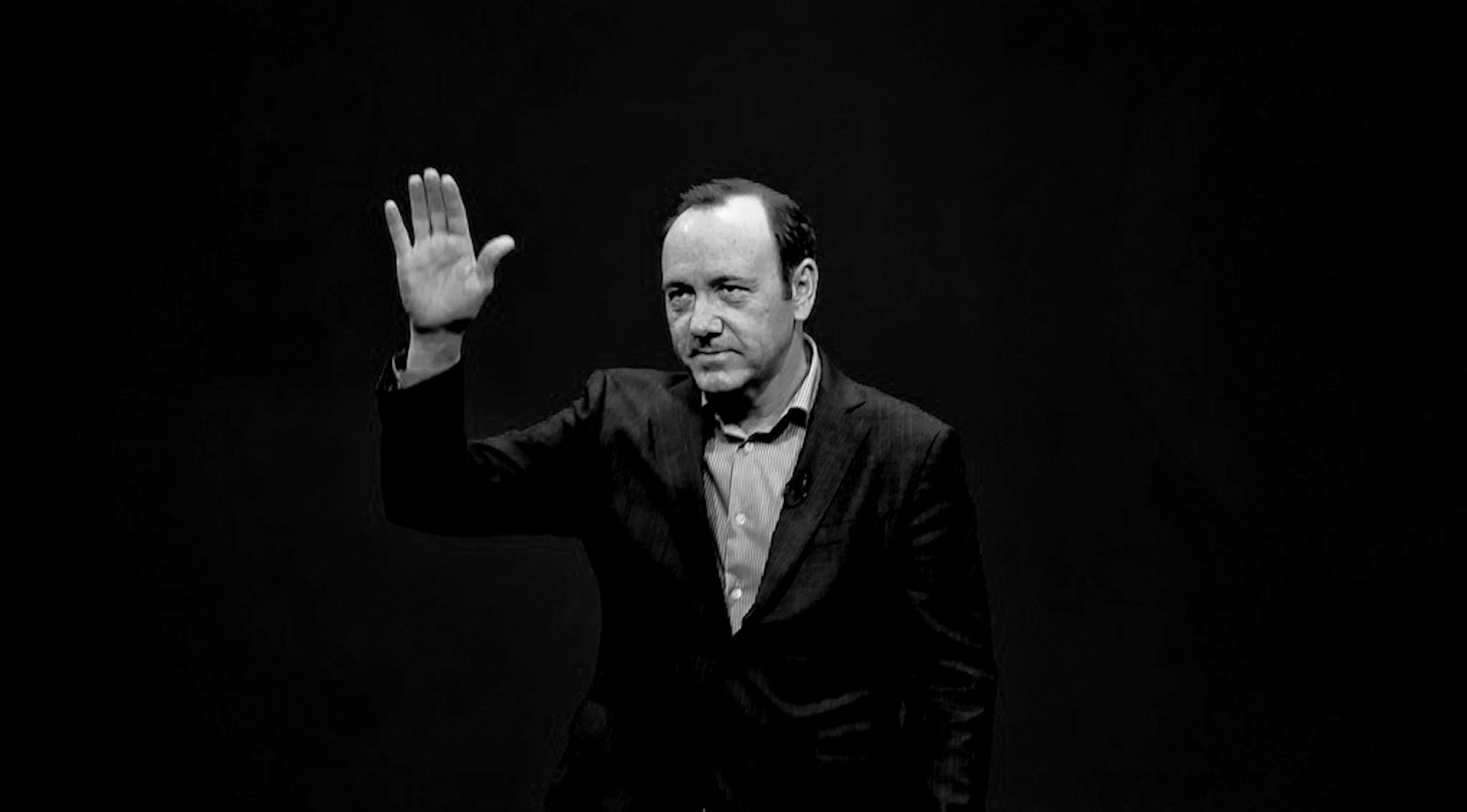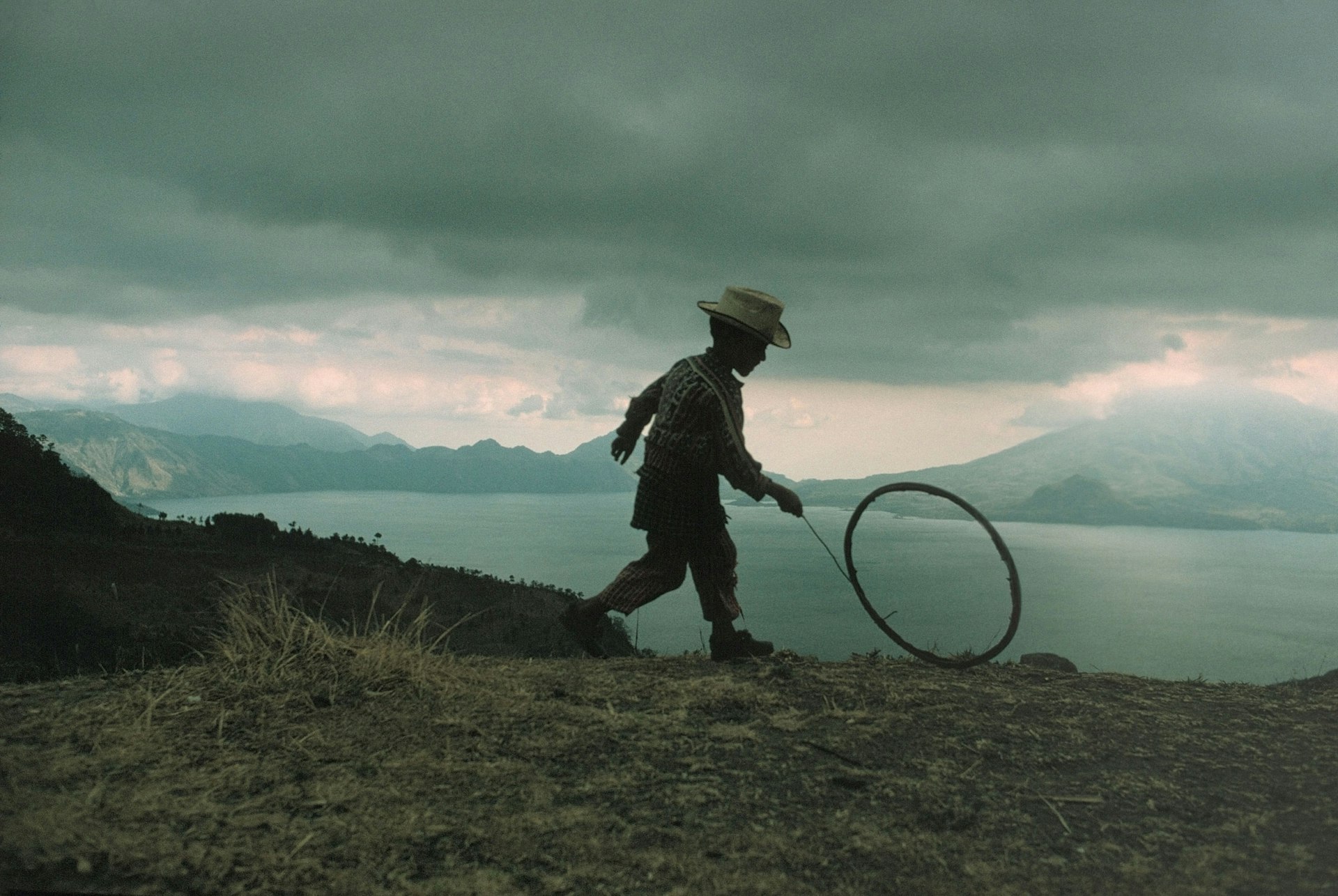
Magnum’s most iconic travel photography is going on sale
- Text by Alex Robert Ross
When George Rodger travelled to the Bergen-Belsen concentration camp at the end of the Second World War to photograph the aftermath of Nazi atrocities, he began to feel that the camera itself was drawing him into degradation. “It wasn’t even a matter of what I was photographing, as what had happened to me in the process,” he wrote two years later. “When I discovered that I could look at the horror of Belsen – 4000 dead and starving lying around – and think only of a nice photographic composition, I knew something had happened to me and I had to stop. I felt I was like the people running the camp – it didn’t mean a thing.”
He resolved to never work as a war correspondent again. Soon after, he travelled to Africa and the Middle East in search of images that would reaffirm a common humanity; two years later, in 1947, he became one of four co-founders of Magnum Photos.
Magnum’s fourth and final Square Print Sale celebrating their 70th anniversary is inspired by Rodger’s work and philosophy. Great Journeys brings together photographers from both Magnum Photos and Aperture – celebrating their 70th and 65th anniversaries respectively. Every photograph in the series plays with the idea of a journey – whether far-flung or close to home, literal or figurative.
See some of the images from the Great Journeys series below, complete with notes from the photographers themselves. During the sale, prints are available for $100 each over at the Magnum Photos Shop website. It’s running today until Friday evening at 6 PM EST. Images are printed on 6×6-inch archival paper and each one is either signed by the artist or stamped by their estate.
Alessandra Sanguinetti

Two Gardens. Pehuajo´, Argentina. 1995 © Alessandra Sanguinetti / Magnum Photos
“This image is from one of the many road trips I made around Argentina in the 1990s. I’d travelled to Europe and the U.S. in my teens, and have since been in many fascinating places. But those journeys into the interior of Argentina are the dearest ones of all. I discovered worlds inside a world I thought I knew. To my dismay, the back of my camera would often get stuck and make double exposures, but in this instance, it was a welcome accident.”
Alex Webb

Istanbul, Turkey. 2001 © Alex Webb / Magnum Photos
“Over the course of seven years – from 1998 to 2005 – I wandered the streets of Istanbul, from Cihangir to Ayvansaray, from Üsküdar to Altınşehir, from Kadıköy to the ancient Theodosian walls. Meandering its warren of winding streets and riding its ferries, I found that serendipity guided me – in its roundabout way. More often than not, I had to lose my way in order to find my most successful photographs.
In 2001, I remember crossing the Sea of Marmara after a frustrating series of missed ferries and lost opportunities – a typical afternoon for a street photographer. In the fading light, I thought I was done for the day, and was considering ordering a tea to help fend off the brisk sea air. Then something caught my eye: an older Turkish man, lost in thought, framed by the pink-purple glow of dusk. His reverie had a kind of mysterious weight to it – hard-to-define, yet almost palpable. In that moment, I slowly began to understand – at least visually – Orhan Pamuk’s notion of ‘hüzün,’ an untranslatable word that suggests a rich and complicated melancholy that’s unique to Istanbul, the writer’s birthplace and one of the most astonishingly beautiful cities in the world, a place that seems haunted by its past, and, these days, beleaguered by its present.”
Chien Chi Chang
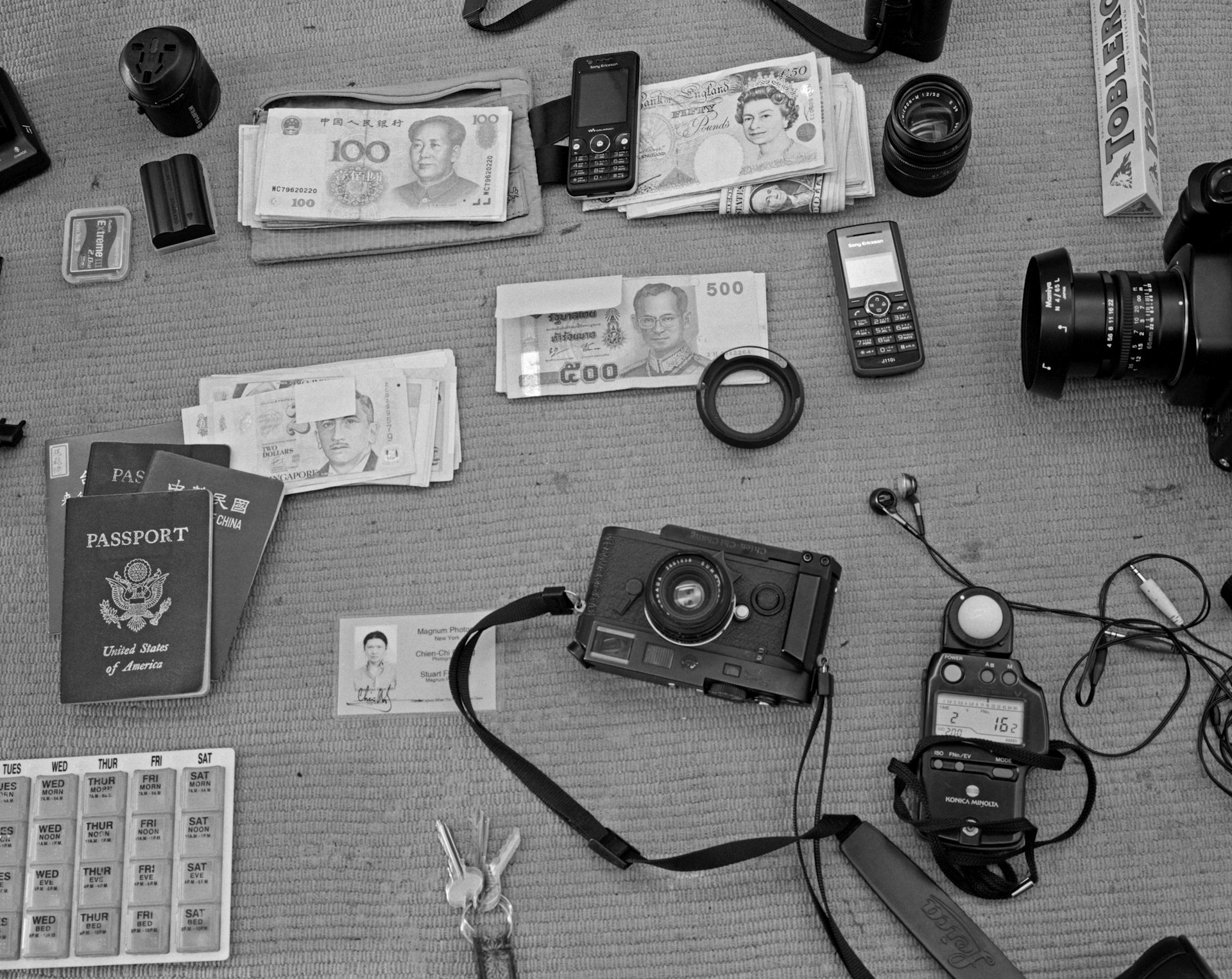
Taipei, Taiwan. 2008 © Chien Chi Chang / Magnum Photos
“All of my journeys have been the same. Journeys are defined by the things we carry. One night on the empty bed, I laid out what was at the heart of true travel. You can see the items in this picture. They remind me jokingly of a song by the singer-songwriter Warren Zevon, who talks about all he needs when he’s stuck in transit. For him, it’s lawyers, guns and money. And me? It’s cameras, fixers, money and a little bit of chocolate.”
Harry Gruyaert
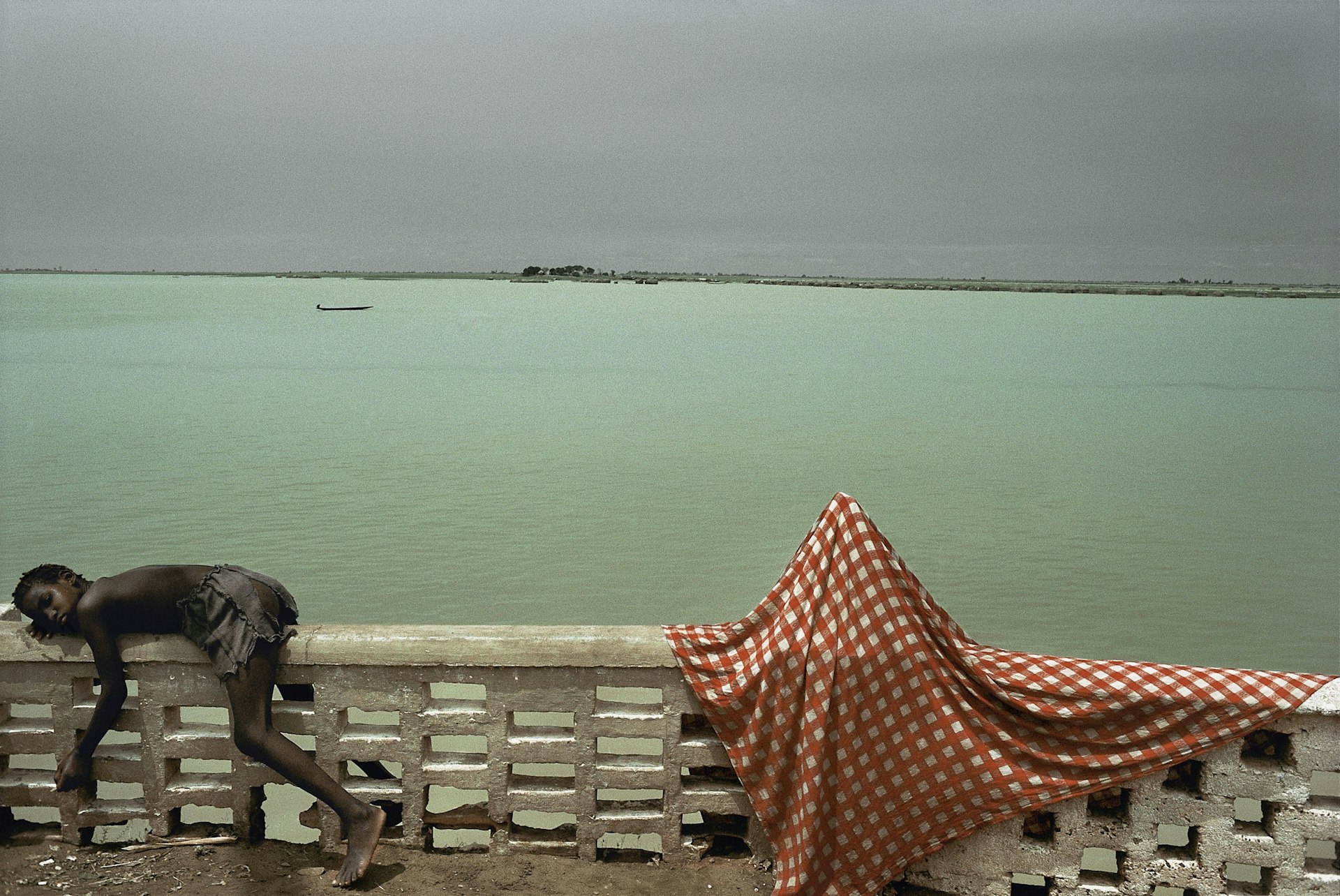
Niger River, Mali. 1988 © Harry Gruyaert / Magnum Photos
“For this edition of square prints, which pays tribute to the work of George Rodger, one of Magnum’s founding fathers, I have chosen a picture I shot in Mali in 1988. It was my first visit there and, as I shoot in colour, I found Africa to be a difficult place to work as the light is so harsh. But I was attracted to the unusual attitude of this boy and to the weird shape of the piece of fabric next to him. (What was hidden underneath it, to this day I still don’t know!)
It is a strange and quite surreal image, and in that sense, very different from the kind of pictures George Rodger took while he was documenting ethnic tribes. Though they are very beautiful, I have always thought there was a lack of sensuality in them, a certain distance between the photographer and his subject. It is probably due to the fact that he was British and born at a time when Britain was still a colonial empire. Every photographer always gives away something of what he is and where he comes from in the images he produces. This is something I find really interesting.”
James Mollison
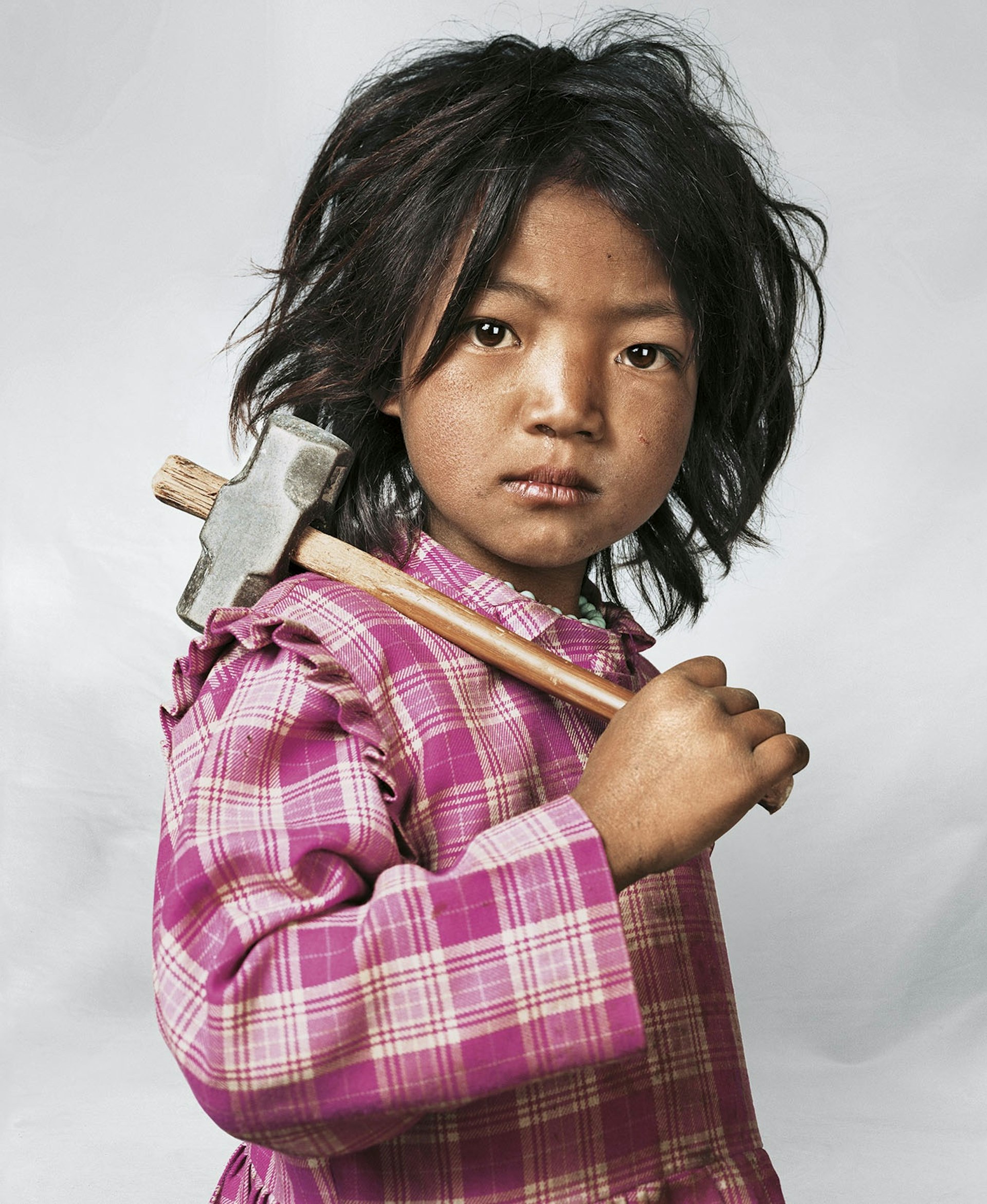
Indira. Kathmandu, Nepal. March, 2007 © James Mollison courtesy Aperture
“This picture was taken while I was working on Where Children Sleep (Chris Boot, 2010), a series of pictures of children and their bedrooms. At the time, Indira was 7-years-old, living with her parents, brother and sister, in a one-room dwelling in Kathmandu. Everyone worked for a living. Indira worked at the local granite quarry – alongside about 150 other children – and had done so since she was 3. Many children at the quarry lose their sight because of stone splinters. She worked 6 hours each day at the quarry. She told me her hope for her life was to become a dancer.The photographer’s proceeds from the sale of Indira’s picture will go to Save the Children, Nepal.”
Marilyn Silverstone

Warrior dancers, attendants of the sacred Mt. Kangchenjunga and defenders of the Dharma, during the Sikkimese New Year dances. Gangtok, Sikkim. 1968 © Marilyn Silverstone / Magnum Photos
“Marilyn’s entire life was a journey. Born in London, she moved with her family at a young age to America, where she attended university. Later, as a photojournalist, she travelled to many different places. Especially for a woman working during these times, she was particularly fearless and adventurous. Marilyn lived in India for a significant portion of her life. This picture was taken in what is now the state of Sikkim, in northeastern India. In the sacred dances like the one performed in this image, swords are used to symbolize wisdom cutting through ignorance.
Sikkim was a difficult country to get into, but Marilyn had the ability to be close to everyone. She was close with monarchs, monks, peasants, politicians, starving children, every class and type of person. She used to say, ‘I treat them all the same. Everyone loves to be photographed.’ Sometimes, when we make trips, everything has a way of looking very exotic. That’s not how Marilyn looked at things; she didn’t see events or rituals as spectacles. In her journey, she always felt close to what she was photographing. Her images reflect her intimacy with the moment.” – Vivian Kurz, Director of Dilgo Khyentse Fellowship/Shechen, Marilyn Silverstone Estate
Pieter Hugo
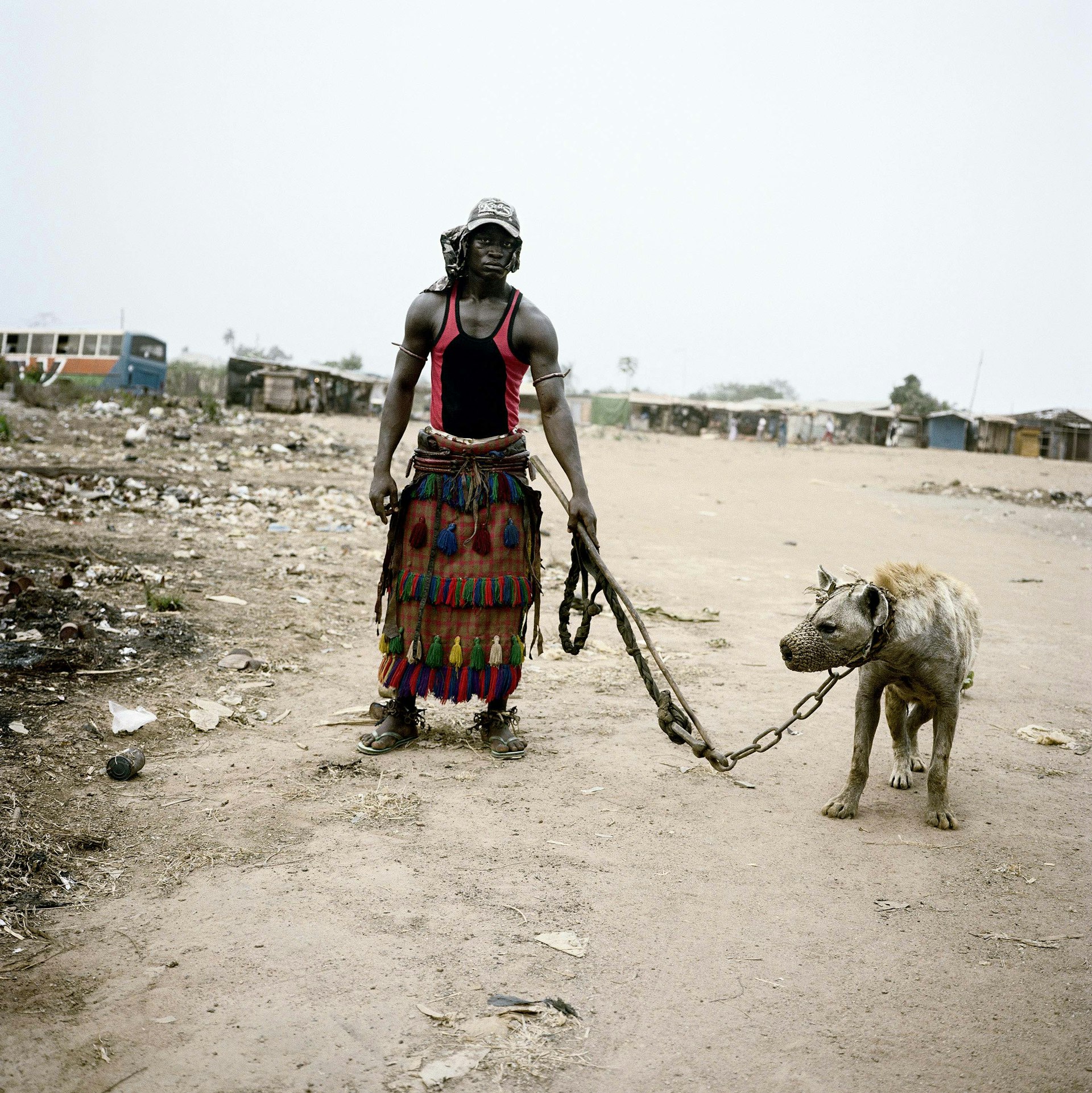
Abdullahi Mohammed with Mainasara. Ogere-Remo, Nigeria. 2007 © Pieter Hugo courtesy Aperture
“These photographs came about after a friend emailed me an image taken on a cellphone through a car window in Lagos, Nigeria, which depicted a group of men walking down the street with a hyena in chains. A few days later, I saw the image reproduced in a South African newspaper with the caption “The Streets of Lagos.” Nigerian newspapers reported that these men were bank robbers, bodyguards, drug dealers, debt collectors. Myths surrounded them. The image captivated me. Through a journalist friend I eventually tracked down a Nigerian reporter, who said that he knew the Gadawan Kura; as they are known in Hausa (a rough translation: hyena handlers/guides.)
A few weeks later, in Abuja, I found them living on the periphery of the city in a shantytown – a group of men, a little girl, three hyenas, four monkeys and a few rock pythons. It turned out that they were a group of itinerant minstrels, performers, who used the animals to entertain crowds and sell traditional medicines. The animal handlers were all related to each other and were practising a tradition passed down from generation to generation.”
Phyllis Galembo
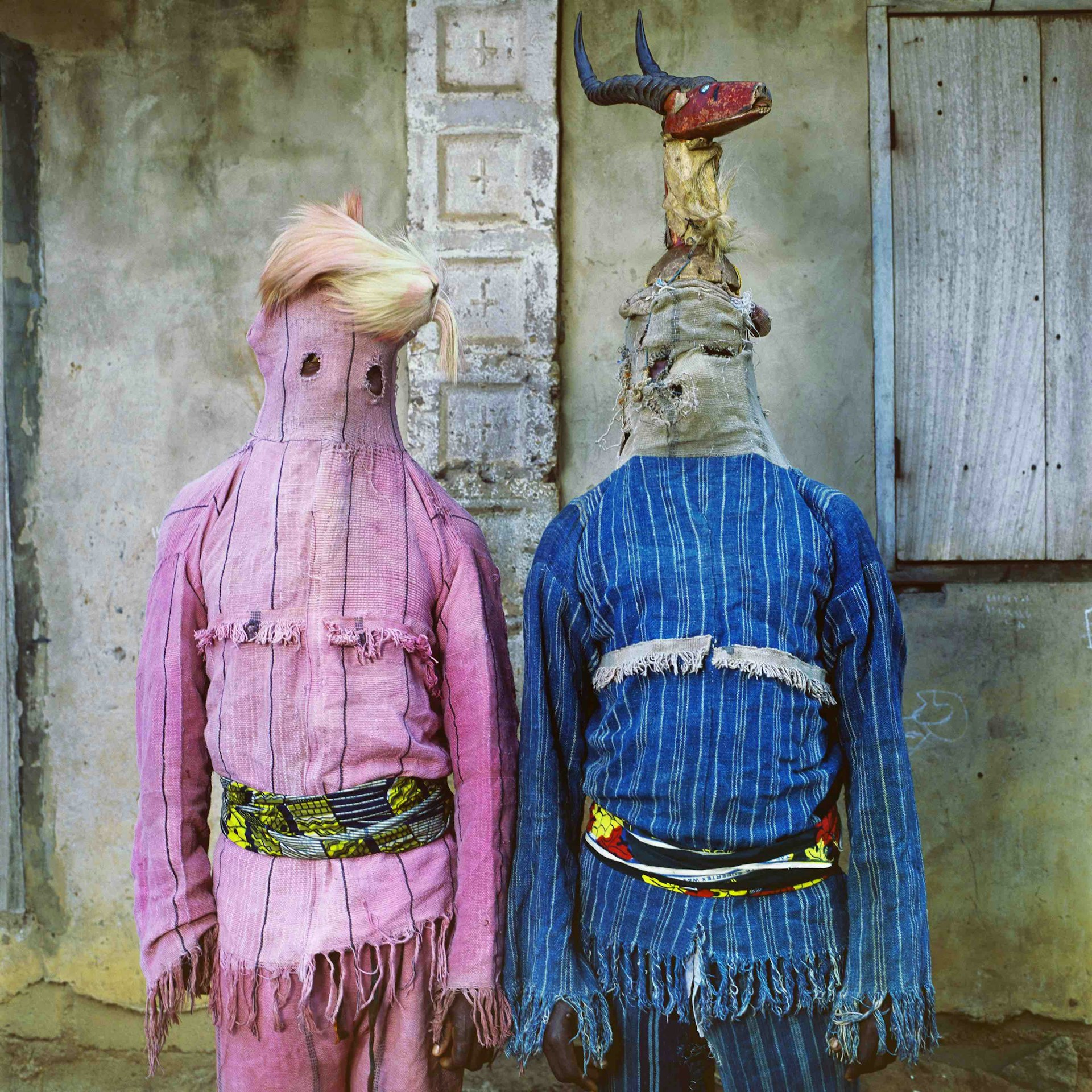
Akata Masquerade. Nigeria. 2004 © Phyllis Galembo courtesy Aperture
“This image is the cover image from my book Maske (Aperture, 2016), and is part of a series of photographs begun in Nigeria and continued throughout Africa and the Americas. Working with a local assistant, we convinced masqueraders to pose, using my travelling portrait studio. Masqueraders often appear at ceremonies and celebrations throughout Nigeria in cities and villages. Often Masqueraders perform in pairs, one representing the female, the peaceful one (dressed in pink), and the other the male, the warrior. While masquerade performers are almost always male, they represent both male and female spirits. At social functions they provide entertainment and some are the voice of the spirit giving advice and commanding respect from the community.
My interest in costumes began as a child and has continued throughout my photographic career, photographing ritual dress and American Halloween costumes. Masqueradescontinue to haunt and inspire me as I document the rich and transformative power of the costume and ritual. A portion of the proceeds from the sale of this print will be donated directly to individuals and communities I have worked with, to use for school fees and artists projects.”
Nikos Economopoulos
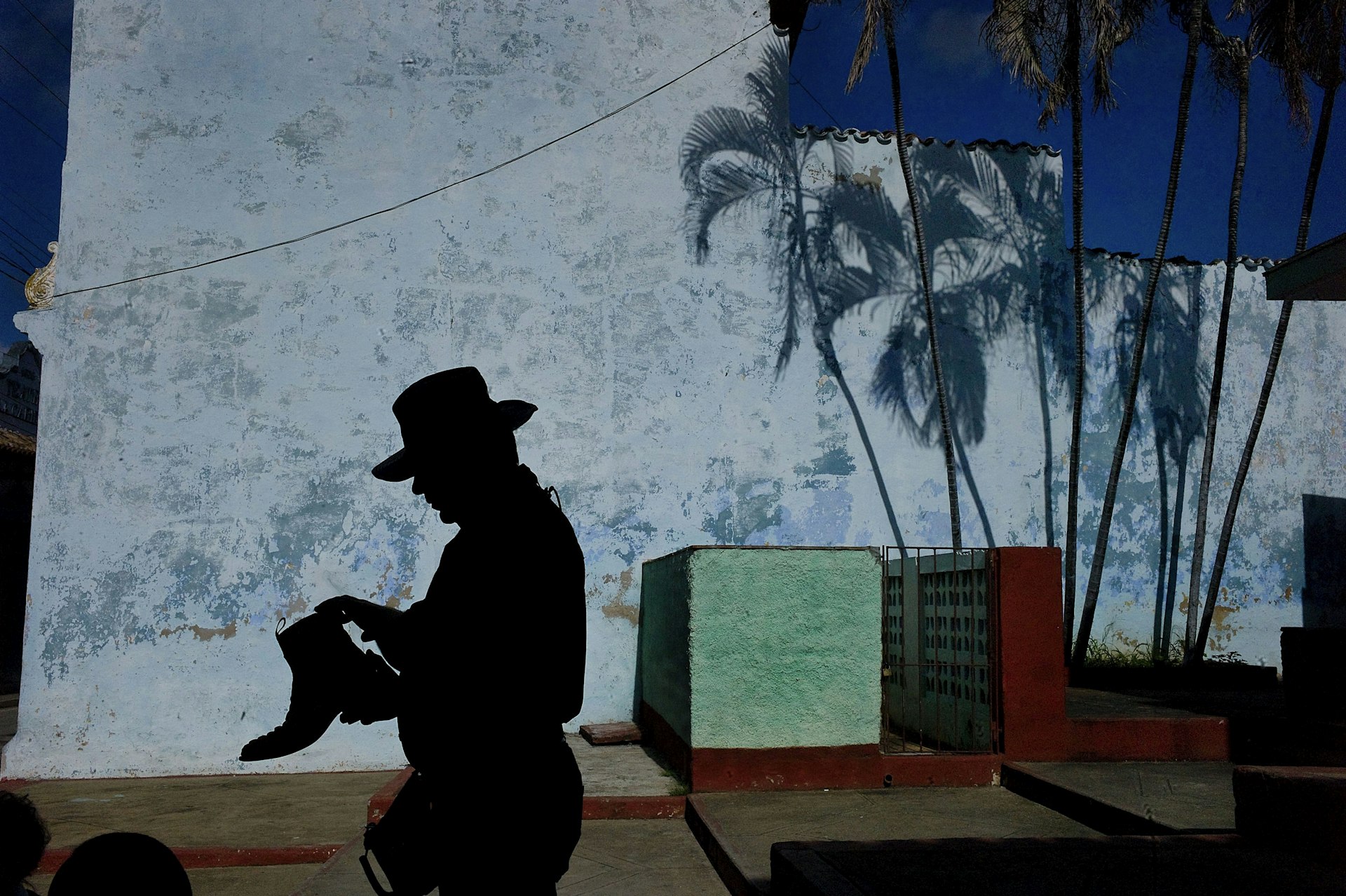
Trinidad, Cuba. 2015 © Nikos Economopoulos / Magnum Photos
“I passed by this place in Trinidad, Cuba, every morning. The light glued the shadows on the wall creating a parallel reality, giving them life, making them stand up against you, above you, gazing at you. All of a sudden, in this country, you are part of a world that cracks you open by opening up to you. There is something in the way people perceive and interact with you, without posing, simply by being there and somehow getting underneath your skin at the same time. The people, the objects, the architecture, even the decay. Taking you along a journey outside yourself, as well as within.”
Moises Saman
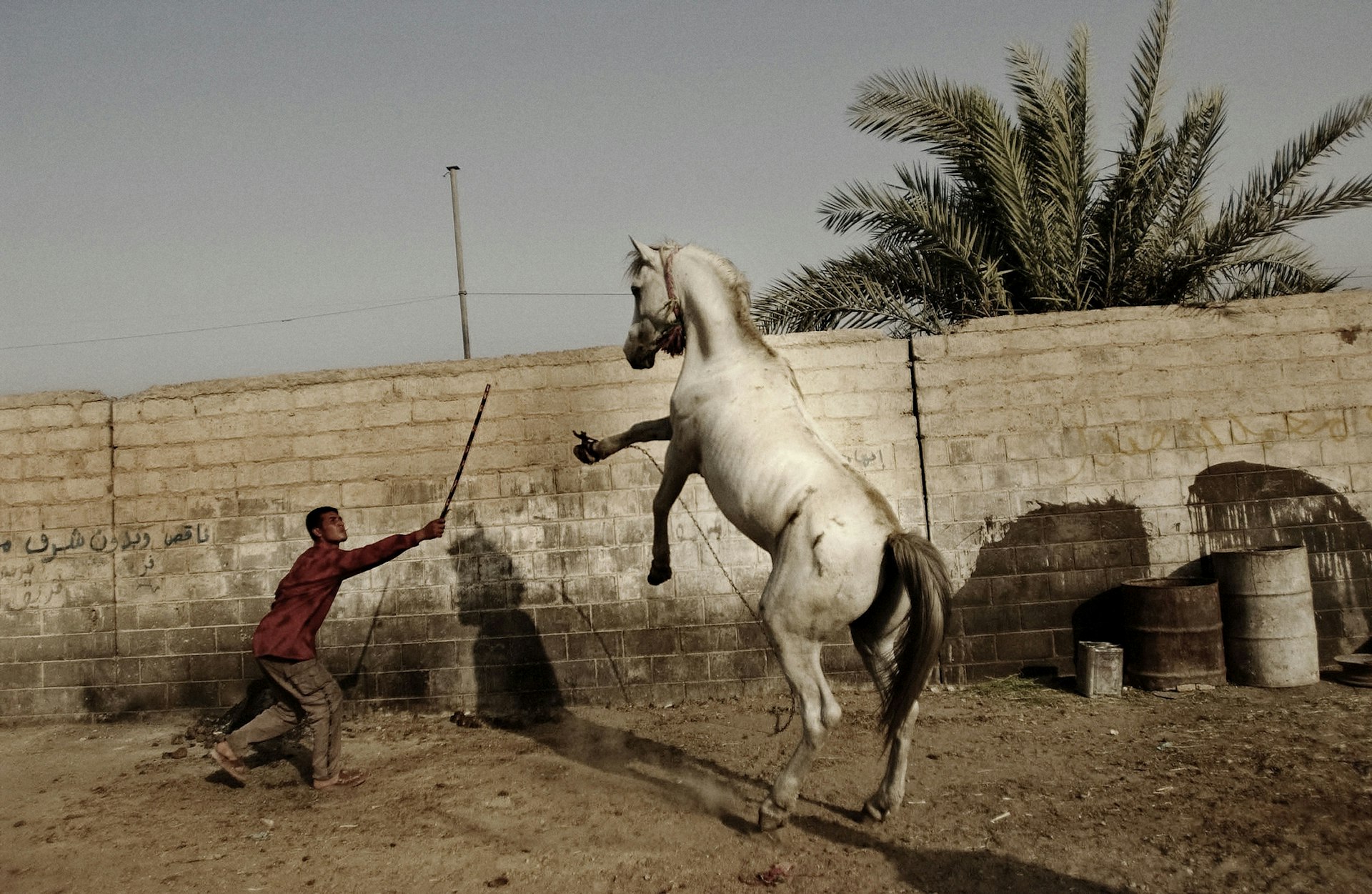
Baghdad, Iraq. July, 2004 © Moises Saman/ Magnum Photos
“Iraq has come to represent quite a personal journey in my life. The war there has defined me and my generation, and as such I find myself returning year after year. For me, a journey is not just the act of travelling, it’s also, and perhaps more importantly, about surrendering any preconceived notions or prejudices, and accepting that which is outside of your control.
I took this photograph in 2004, in the aftermath of the American invasion. I remember sharing the same false sense of optimism that was obvious only on the surface. I did not know it back then, but the beginning of my real journey in Iraq had not yet begun.”
Miguel Rio Branco

People of the Gorotire, Kayapó near the Seco River.
Pará, Brazil. 1992 © Miguel Rio Branco / Magnum Photos
“In 1983, being somehow part of a society within a country still seeking its personality, a country of gigantic contrasts, I was looking to do a piece on Indigenous Brazilians. I had been looking for several years without success when I got to the gold diggers area of Cumaru. I arrived there broke, but was invited by the two Kayapó chiefs, Kanhoc and Totoi, to come to their turtle festival that happens every five years. Not only did this experience bring me surprising material, but it also changed the direction of my use of light in photography; that same year I participated in the audio-visual installation, ‘Dialogues with Amaú,’ at the São Paulo Biennale.
Later, in 1992, with a journalist friend from Stern, Rainer Fabian, we were invited by Kanhoc to return to the village. The idea was to illuminate not only the changes in the village but also those in my creative approach to the subject. Things did not go as well as the magical trip years before… still their portrait was able to be made with this great parallel between male and female, the future warrior and his generous mother.”
David Alan Harvey
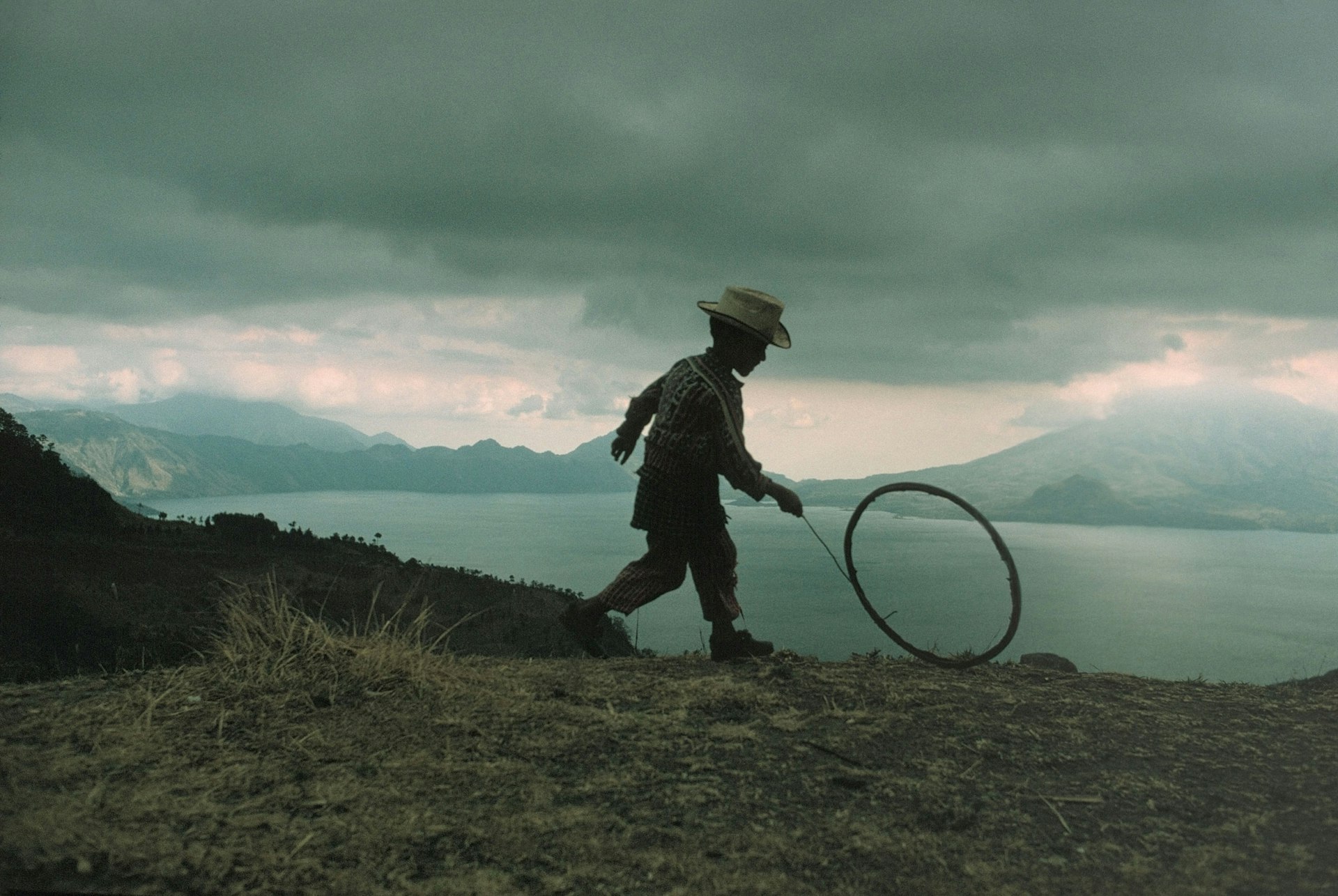
Maya boy plays. Lake Atitlán, in the highlands of Sierra Madre. Guatemala. 1975 © David Alan Harvey / Magnum Photos
“My first ‘great journey’ outside of my own isolated world was into the Mayan highlands. Here I found a cultural resiliency that I never quite witnessed again. The highland Maya were victims of the Spanish conquistadores, yet have kept their languages, customs, and their pagan spirit basically intact for over 500 years. Geography saved this culture thanks to the protection of the mountains: The highland Maya were hard to reach for the Spanish soldiers. I spent the better part of 2 years in these mountains and valleys, thinking like an anthropologist, soaking up culture and language. The beginnings of my book Divided Soul (Phaidon Press, 2003) happened right here. It was a seminal journey that led to many others.”
Great Journeys’ Magnum’s Square Print Sale in Partnership with Aperture runs from 9AM EST Monday 30 October until 6PM EST Friday 3 November 2017.
Enjoyed this article? Like Huck on Facebook or follow us on Twitter.
